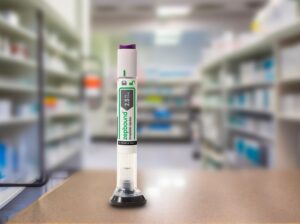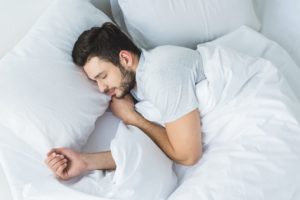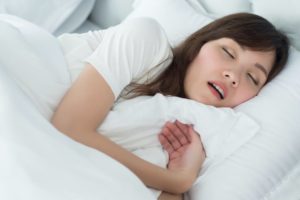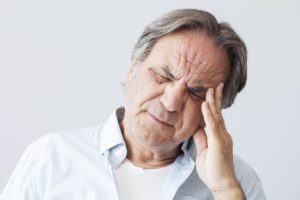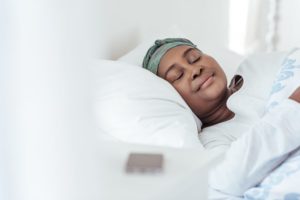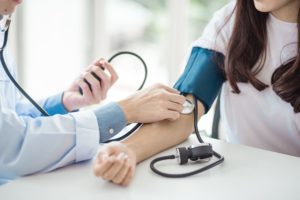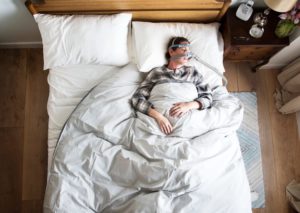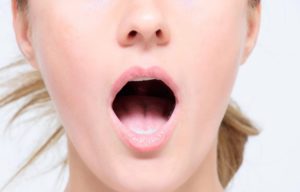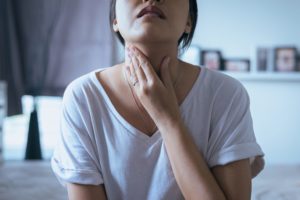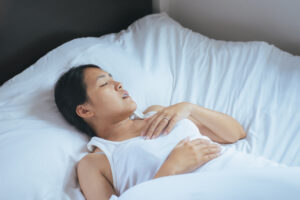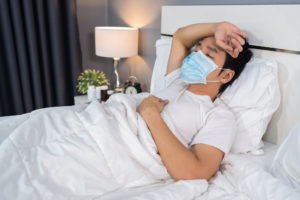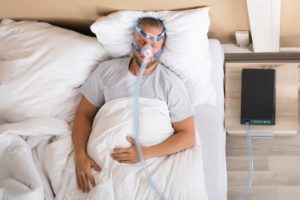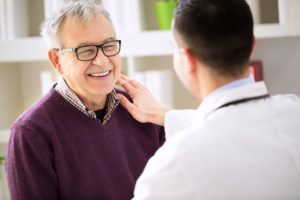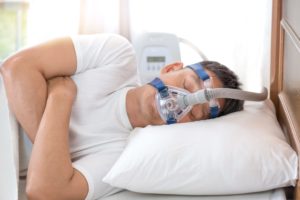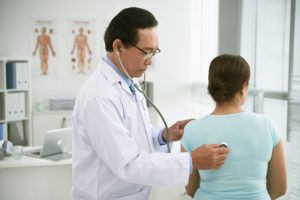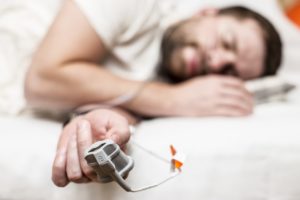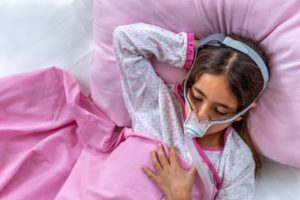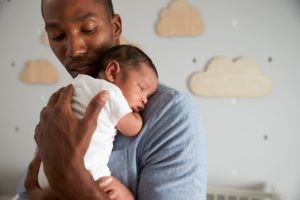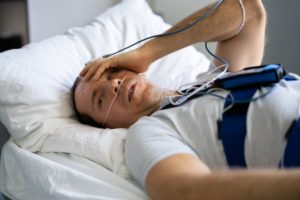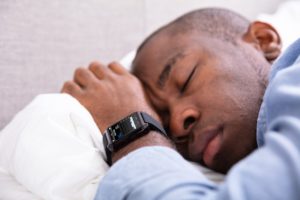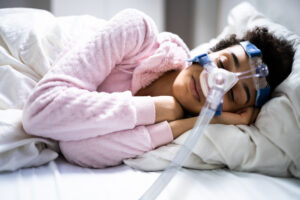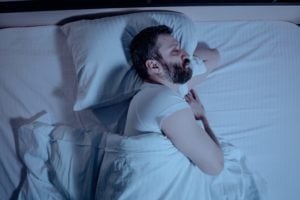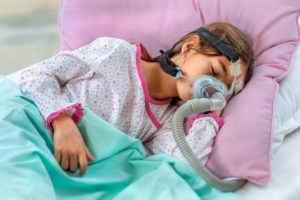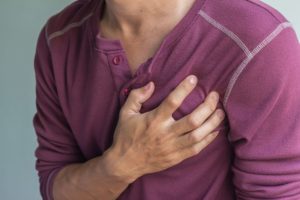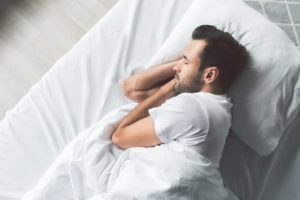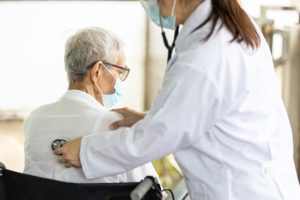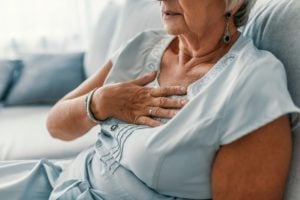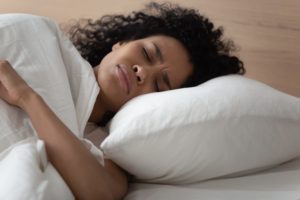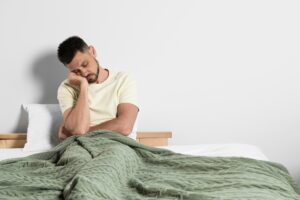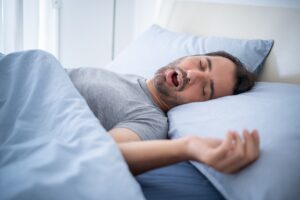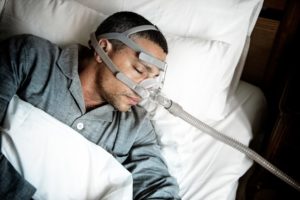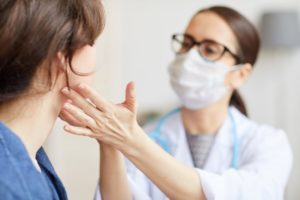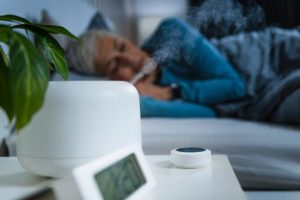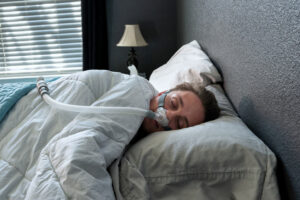When you buy through our links, we may earn a commission. Products or services may be offered by an affiliated entity. Learn more.
Diagnosing Obstructive Sleep Apnea
Obstructive sleep apnea (OSA) is a sleep-related breathing disorder that afflicts nearly one in 10 Americans . This disorder also increases one’s risk for stroke, heart attack, and premature death. What’s worrisome is that since symptoms occur while you are asleep, sleep apnea often goes undiagnosed. For those who do notice symptoms, they may brush them off as just snoring.
Left untreated , sleep apnea has been linked to heart attack, diabetes, glaucoma, cancer, and some cognitive and behavioral disorders. Untreated obstructive sleep apnea also increases one’s risk of car accidents and workplace injury. The consequences are just as serious for children. Pediatric obstructive sleep apnea can disrupt your child’s sleep, resulting in cognitive impairments, attention disorders, and stunted growth.
If you are concerned that you or a loved one may have sleep apnea, it’s good to familiarize yourself with the risk factors and warning signs of sleep apnea, so you know when it’s time to see a doctor. We also review the common tests used to diagnose sleep apnea.
Understand Your Sleep Apnea Risk
Answer three questions to take charge of troubled sleep.
What Are the Risk Factors for Sleep Apnea?
Certain characteristics put you at a higher risk for obstructive sleep apnea. These include:
- Overweight or obese: Being overweight puts added pressure on your respiratory system and narrows your upper airway, making it harder to breathe at night. Obesity is one of the main risk factors for OSA, according to the American Academy of Sleep Medicine , with your risk of OSA increasing as you gain weight.
- Having a Large Neck Circumference: Similarly, the extra weight of a large neck pushes on the airway while you sleep. Some researchers claim that a large neck may be a more accurate predictor of OSA than obesity . A large neck is defined as 17 inches or larger in men, and 16 inches or larger in women.
- Snoring: Snoring is one of the most common signs of sleep apnea. Loud snoring, choking, and gasping for air are all strong indicators for obstructive sleep apnea. However, most patients and their bed partners do not notice these events occurring throughout the night because they’re fast asleep.
- Smoking or Drinking Alcohol: Alcohol relaxes the throat muscles, which can interfere with breathing. The use of other sedatives increases your risk for the same reason. Tobacco inflames the upper airway, causing it to narrow. As a result, people who smoke or drink regularly have a higher risk for sleep apnea.
- Having a Small Airway: Having a small airway may restrict your breathing at night. People can have a small airway for any number of reasons, including a small lower jaw, large tonsils or tongue, nasal allergies, or Down syndrome.
- Being Male: Men are twice as likely as women to have OSA. Women tend to have less severe forms of OSA . Sex differences in the upper airway may explain this discrepancy. However, the sleep apnea gender gap narrows in old age, as women’s risk of OSA increases after menopause. Snoring also increases during pregnancy, and OSA can affect up to 26% of pregnant women in the third trimester.
- Being Black: OSA affects all races and ethnicities, although it is more prevalent among Black people than white people.
Up to 4 percent of children may have sleep apnea. Obesity, seasonal allergies, large tonsils, and certain dental conditions or birth defects are common reasons why obstructive sleep apnea occurs in children.
Some of these factors — like the size of your neck and jaw — cannot be changed. But there are some lifestyle changes you can start today to lower your risk for obstructive sleep apnea. You can lose weight to achieve a healthy body mass index (BMI), treat any nasal allergies you may have, and if you do smoke and drink alcohol, stop smoking altogether and withhold alcohol 3 hours prior to bedtime.
What Are the Warning Signs of Sleep Apnea?
Just because you exhibit some of the risk factors above does not mean that you will develop sleep apnea. It does mean you should be more vigilant of your risk for sleep apnea. If you notice any of the following sleep apnea symptoms, consult a doctor as soon as possible.
- Your sleep partner complains of loud snoring, gasping, or choking sounds during the night.
- You wake up during the night, sometimes choking and frightened.
- You feel sleepy at work, at school, or while driving.
- Your sleep doesn’t feel restorative.
- You feel grumpy, forgetful, or irritable.
- You experience morning headaches.
Sleep apnea symptoms in women are more likely to include anxiety, depression, daytime fatigue, poor sleep, and poor quality of life, although these symptoms may also occur in men.
The warning signs for pediatric obstructive sleep apnea can be different than for adults. Pay attention to your child’s sleep, weight, and behavior. Specifically, keep an eye out for the following:
- Loud, Intense Snoring: Snoring is the most common red flag for OSA. However, as many as one in four kids in elementary school snore regularly, with most tapering off as they get older. How do you know if your child’s snoring is an indicator of something more serious, like pediatric sleep apnea? Notice whether their snores are punctuated by gasps or labored breathing or if they are accompanied by thrashing in bed.
- Obesity: If your child is overweight, they could be at risk for sleep apnea. Obesity has accelerated among children in recent decades, and some researchers have found that obesity and OSA both negatively affect cognitive functioning in children.
- Bedwetting: Children with OSA produce more sweat and urine than normal, which may lead to bedwetting. Researchers also believe OSA may affect a child’s arousal response, bladder pressure, and urinary hormone secretion, which can all contribute to nighttime bedwetting.
- Learning and Behavior Problems: Sleep apnea causes sleep deprivation. In adults, this may manifest as increased irritability, poor mood, impaired focus and decision-making. The same can happen with children. Children with OSA may be moodier or more hyperactive, have trouble paying attention in school, and be more likely to engage in disruptive behavior .
- Daytime Symptoms: Children with sleep apnea may be more likely to mouth breathe and complain of morning headaches. Excessive daytime sleepiness is less common in children than in adults.
If you notice any of the above warning signs in yourself, your sleep partner, or your children, it’s time to talk to a doctor about your sleep apnea.
Diagnosing Sleep Apnea
If you do suspect that you may have sleep apnea, don’t wait to see a doctor. Getting properly diagnosed and treated may protect your heart health, your brain health, your mood, and help you feel more energized.
Prepare for your appointment by keeping a sleep diary for one to two weeks prior. Record when you went to bed, when you woke up, how long you slept, and how many times you woke up during the night. Also write down whether you exercised, when you had dinner, and if you consumed any alcohol or tobacco. Bring information on any medication you’re currently taking, your personal and family medical history, and a list of your symptoms.
At your appointment, your doctor will ask questions about your sleep problems, personal and family medical history, and lifestyle. These may include:
- How severe are your symptoms?
- When did your symptoms begin?
- Are your symptoms consistent every night?
- How does your partner describe your snoring?
- Have you noticed certain things make your symptoms worse, such as drinking alcohol?
- Does anything make your symptoms better, such as exercise or a different sleep position?
If your doctor determines that your symptoms are indicative of sleep apnea, they will likely refer you to a sleep specialist. The sleep doctor may perform an additional sleep evaluation and then order a polysomnogram or home sleep test.

Polysomnogram
Polysomnograms are overnight sleep studies performed at a sleep center. You will sleep in a private bedroom that’s designed to make you feel comfortable. A technician will place electrodes on your face and scalp, a belt around your chest, and an oximeter probe onto your finger. There may also be a microphone to record your snoring. This equipment will measure your breathing patterns, blood oxygen levels, arm and leg movements, and heart, lung, and brain activity.
While you sleep, these vitals will be monitored so the doctor can confirm the presence of sleep apnea, as well as rule out any other potential sleep disorders. Polysomnograms that find five or more respiratory events per hour meet the diagnostic criteria for obstructive sleep apnea. For children, one or more of these events suffices.
Polysomnograms are more expensive than home sleep apnea tests but are usually covered by health insurance.
Home Sleep Apnea Test
Home sleep tests are simplified versions that you can use to diagnose sleep apnea at home. The kit will include equipment to monitor your blood oxygen levels, breathing patterns, and heart rate.
If the results are abnormal, your doctor may proceed with recommending treatment. If your results are normal, they may then recommend a polysomnogram. This is because home sleep tests may underestimate OSA severity and are not the best at detecting rare types of sleep apnea, such as central sleep apnea.
If your doctor diagnoses you with obstructive sleep apnea, they may recommend continuous positive airway pressure (CPAP) therapy or another oral device for you to wear at night. Lifestyle changes, such as weight loss, exercise, or abstinence from alcohol or smoking, may also be recommended. Finally, if needed, they may refer you to another specialist, such as an allergist or an ear, nose, and throat doctor, who may recommend other treatments or surgery to eliminate blockage in your nose or throat. If central sleep apnea is suspected, you may be referred to a cardiologist or neurologist.
While OSA can be serious, it’s also a very common and treatable condition. If you are concerned that your or your child’s snoring may be a sign of something more serious, talk with your physician.

Still have questions? Ask our community!
Join our Sleep Care Community — a trusted hub of sleep health professionals, product specialists, and people just like you. Whether you need expert sleep advice for your insomnia or you’re searching for the perfect mattress, we’ve got you covered. Get personalized guidance from the experts who know sleep best.
References
9 Sources
-
Strohl, K. P. (2019, March). Merck Manual Consumer Version: Sleep Apnea., Retrieved January 22, 2021, from
https://www.merckmanuals.com/home/lung-and-airway-disorders/sleep-apnea/sleep-apnea -
National Heart, Lung, and Blood Institute. (n.d.). Sleep apnea.
https://www.nhlbi.nih.gov/health-topics/sleep-apnea -
American Academy of Sleep Medicine. (2014). The International Classification of Sleep Disorders – Third Edition (ICSD-3). Darien, IL.
https://aasm.org/ -
Davies, R. J., Ali, N. J., & Stradling, J. R. (1992). Neck circumference and other clinical features in the diagnosis of the obstructive sleep apnoea syndrome. Thorax, 47(2), 101–105.
https://pubmed.ncbi.nlm.nih.gov/1549815/ -
A.D.A.M. Medical Encyclopedia. (2020, January 29). Obstructive sleep apnea – adults. MedlinePlus., Retrieved January 22, 2021, from
https://medlineplus.gov/ency/article/000811.htm -
Wimms, A., Woehrle, H., Ketheeswaran, S., Ramanan, D., & Armitstead, J. (2016). Obstructive sleep apnea in women: Specific issues and interventions. BioMed Research International, Article e1764837, 1–9.
https://pubmed.ncbi.nlm.nih.gov/27699167/ -
MedlinePlus: National Library of Medicine (US). (2018, March 1). Obstructive Sleep Apnea., Retrieved January 22, 2921, from
https://medlineplus.gov/genetics/condition/obstructive-sleep-apnea/ -
Zhang, G., Spickett, J., Rumchev, K., Lee, A. H., & Stick, S. (2004). Snoring in primary school children and domestic environment: a Perth school based study. Respiratory research, 5(1), 19.
https://pubmed.ncbi.nlm.nih.gov/15527500/ -
Capdevila, O. S., Kheirandish-Gozal, L., Dayyat, E., & Gozal, D. (2008). Pediatric obstructive sleep apnea: Complications, management, and long-term outcomes. Proceedings of the American Thoracic Society, 5(2), 274-282.
https://pubmed.ncbi.nlm.nih.gov/18250221/


